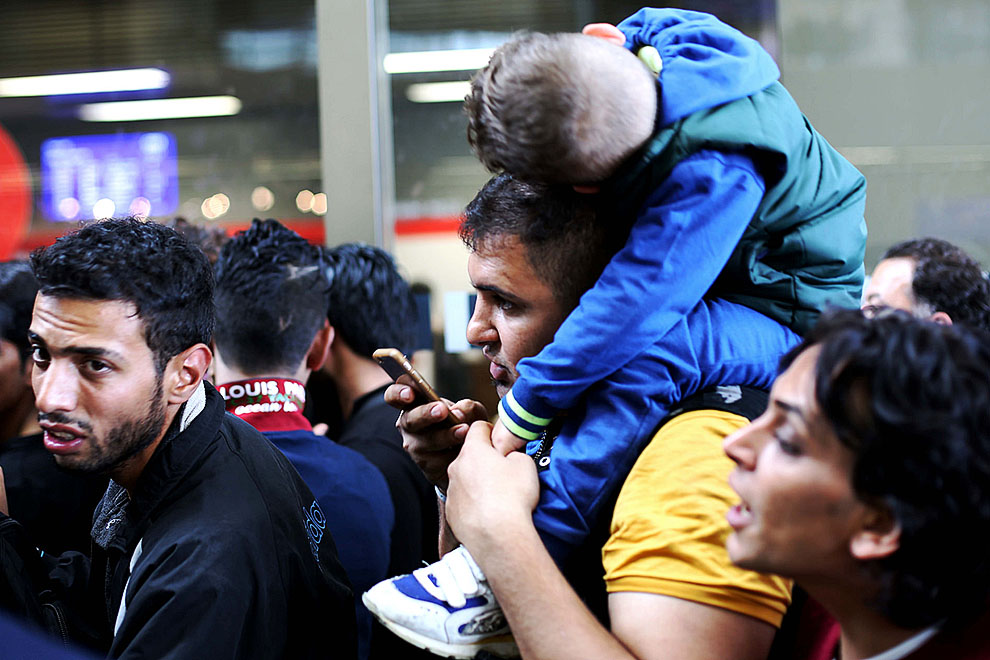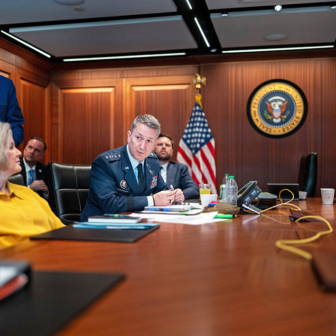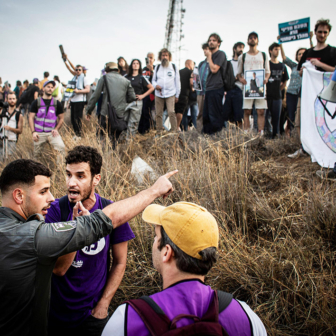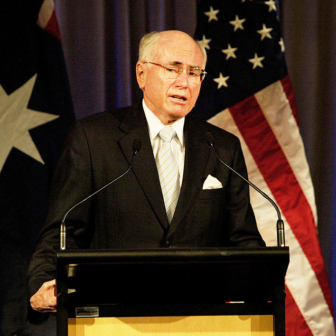It was never easy trying to be optimistic about the Middle East, but the past fifteen months or so have produced especially depressing circumstances. The so-called Islamic State has cut a moral gash through western Iraq and eastern and northern Syria, leeching off local grievances and taking advantage of the failings of weak central governments to force itself on local populations.
As the focal point of Daesh – to use the Arabic acronym the organisation detests – Syria is especially prominent at the moment. In Iraq, by contrast, the group is more constrained. Hemmed in by capable and hostile Kurds to the north and Iraqi Shiites to the south, it has few choices except to launch a major new offensive, an impractical proposition when it needs to fight off Iraqi forces and coalition air power to retain the areas it controls. Its alternative is to focus on Syria, which is what it seems to be doing.
The news of its destruction in recent weeks of several temples and towers at Palmyra – one of the great archaeological sites of the Middle East, which Daesh seized in May – is grim, if not entirely unexpected. Even more obscene was the beheading of the retired head of Palmyra’s antiquities, Khaled al-Asaad, for not divulging the whereabouts of various treasures, some of which had reportedly been buried when Daesh was advancing on the city. He reportedly survived a month of torture, giving nothing away, before he was murdered.
For the wider dynamics in Syria, however, the news is grimmer still. Over the northern summer and into the autumn of 2015, four risks and portents have converged. If even some of them come to pass, then things in Syria are likely to get much worse. These can be titled, if a little simplistically, as consolidation (of Daesh); isation (of the conflict); catastrophisation (of the human side of the conflict); and disintegration (of the Syrian regime).
Consolidation refers to the fact that Daesh is becoming increasingly entrenched in the parts of Syria that it controls. The community is extremely cautious about military intervention in Syria, and not only because they don’t want to strengthen the president, Bashar al-Assad. The legal basis for any substantial military action in Syria is much less certain than in Iraq, where coalition forces have been invited by the Iraqi government to assist.
The renewed involvement of Russia in support of its ally Assad is one of the few developments to have strengthened the Assad regime. This is part of the second dynamic, isation. In supporting Assad, Russia is not only being loyal to an old ally and protecting its economic interests; it is also protecting its longer-term strategic goals in the region, including its naval access to the Mediterranean port of Tartus and its image in other Arab countries. Perhaps above all, Russia’s actions also illustrate Vladimir Putin’s concerns about extremism among Russia’s own Muslim population; past incidents such as the uprisings against Moscow in Chechnya mean that Russia shares the same concerns as many other states about the radicalising effect of Daesh. About one in eight Russians is Muslim.
Russia’s role has shifted in the past couple of weeks. Once focused on diplomatic support and arms, it is now taking on an expanded role that includes Russian troops providing detailed training and advice to the Syrian army, possibly along with advanced weaponry and perhaps even with Russian airstrikes against Daesh to follow.
But the growing isation of the civil war goes beyond Russia. Recent weeks have seen a sudden and deep engagement by Turkey in the fight against Daesh, although it is motivated as much – or more – by its fight against the Kurdish PKK. It also seems likely that the United States will intensify its air campaign in Syria. And, of course, last week the Australian government announced that it would expand its air operations from Iraq into Syria as well.
What all these examples suggest, however, is an increasing risk of third parties either getting tied up in Syria for their own reasons, or perhaps even clashing with each other if they fail to coordinate their actions and focus on Daesh. Low on Western hostages, having murdered several of them over the past year, Daesh can be expected to make a very gruesome spectacle out of any coalition aircrew or others they might capture – as if the immolation of Jordanian pilot Moaz al-Kasasbeh last December was not dreadful enough.
The third dynamic – catastrophisation – has dominated the news over the northern summer as Europe has been thrust further into a refugee crisis, driven in large part by events in Iraq and especially Syria. Almost one-fifth of Syria’s population has fled the country, with most of them forced into camps in neighbouring countries. With little hope of resettlement in these Middle Eastern countries – most of which are poor and overwhelmed by the numbers of Syrians they are hosting – and with an end to the fighting as remote as ever, mid 2015 was obviously the moment when a critical mass of refugees decided to take the risk of trying to reach Europe.
The refugee crisis is a sign of how grim the prospects in Syria must be: those with the most at stake in the country are not just staying away, but risking their lives to try to find a better, permanent place to resettle. Around 120,000 Syrians applied for asylum in the first seven months of 2015, but this could be only the start of a real crisis, given the numbers waiting in Turkey (around 1.9 million), Lebanon (over 1.1 million) and elsewhere.
Finally, disintegration. This year, Bashar al-Assad has lost Idlib, a northern provincial capital, and Palmyra, important not only for its archaeology but also for its location on the main road between the west of Syria – Daesh territory – and the capital, Damascus, with its populous surrounds in the south. He now faces a more concerted effort by another of his myriad opposition militias, the al Qaeda–linked al-Nusra Front, which has built a coalition of Islamist forces in the north of the country that, as Robert Fisk pointed out in the Independent in June, almost certainly has Aleppo, Syria’s second major city, in its sights.
Meanwhile, Assad is going through troops faster than he can recruit and train new ones, and is failing to ensure that many basic economic needs such as fuel are available in regime-held areas.
Then again, as Aron Lund of the Carnegie Endowment noted back in January, the Assad regime “is always either crumbling or on the verge of victory.” Assad’s fall has been predicted many times before, but although he may yet hang on, his position now is probably the weakest it has been since 2011.
If it came, his collapse would probably spell the end for Syria as a nation-state. At the humanitarian level, it could lead to a second phase of civil war between, for example, Daesh and al-Nusra; despite the fact that both are “Islamist extremist” in the broadest sense, their fundamental differences would very likely see them fight to the bitter end. In the process, Daesh could become further entrenched not only in Syria, but also in the wider region, and some religious minorities could face the prospect of extinction in Syria. Syria’s youth more generally would fare little better.
A victory by either of these groups would undoubtedly undermine Middle Eastern security, and the only question is how badly. A Daesh victory over al-Nusra could see the group try to expand into new areas, and even into Jordan – which could then draw the Israelis into a direct fight. The converse, an al-Nusra victory, would be little better; in effect it would give quasi-statehood to an al Qaeda offshoot.
If Assad fell, Russia and especially Iran would lose a key regional ally, and Iran its only Arab ally. If they judged Assad’s demise to be the product of direct US action or intervention, they would probably respond – although how, it is impossible to say.
Even if Assad falls by virtue of his own miscalculation, and even if alternatives like Daesh and al-Nusra are neutralised, the most likely prognosis is that Syria will fragment. This scenario is quite frightening, because the various groups in Syria are deeply intertwined. The population movements would be enormous, as would the aid needed for Syria to transition into several smaller, more ethnically or religiously coherent states.
Many years ago, at a conference in his honour, I met the famous secular Syrian intellectual Sadik al-Azm. It was not too many years after the terrorist attacks of 11 September 2001, and he made a surprising comment: 9/11, he said, was not the start of a great war between Islamism and the West. Rather, he said, “it’s proof that the West has already won that war – at least the war of ideas between the two sides.” No one who can convince others of the virtues of their political views flies aeroplanes into buildings, he observed, and so terrorism like that on 9/11 is an inarticulate, enraged scream by proponents of an ideology that could never build any real or lasting appeal. It was a swan song, an acknowledgement of defeat.
Watching the rise of Daesh since mid 2014 brings those comments back to mind. Events seem to have confirmed his assessment in the case of al Qaeda, but does the same argument apply to Daesh? Probably: its focus on the spectacle of violence is a deliberate strategy, after all, to cow its opponents and appear stronger than it actually is. Yet even if al Qaeda’s fate is also to be Daesh’s, the Syrians, like the Iraqis, will have paid a devastating price for that swan song. •




